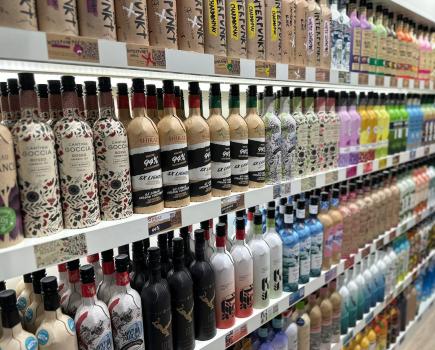The trials and tribulations of entering competitions,
writes Sergio Verrillo Winemaker at Blackbook
Starting out as a new wine producer is an incredibly daunting task – once you’ve got past the point that you have a decent product in the bottle, you have to start to wade through the jungle that is sales and marketing to ultimately find a way to connect with potential buyers.
Often external services are leveraged to build buzz, boost brand awareness and increase sales. The most tangible channels may be considered to be those which offer a stamp of approval or credibility – the sparkling gold, silver or bronze stickers of competition wins are one of the most tangible demonstrations such an investment can offer.
The goal is to help us as producers sell more wine and reach our wider audiences, and the marketing messaging attached to the competition invitations outlines a raft of benefits, which can be of mixed value at the end of the day. In this month’s column, I have put together a few thoughts on the trials and tribulations of entering into competitions.
First, give yourself a fighting chance. Enter wines that you feel will have a high chance of success and understand what you are getting measured against – for example, do they have a category for your varietal or will you be in a broader set?
Do not enter the wine that is made from filtering the left-over lees from the past four harvests, giving you a bump in margin, or the one that is a funky style and has a marmite reaction from those who taste. That is a no bueno move.
Instead, taste through your range and find the ones that represent your style and quality and stand well against your peers. A great way to do this is to listen to feedback from your customers in the trade, or if you have access to a wine critic, that would be even better.
Trade folk are a good and consistent indicator of how your wines would fare in a panel of judges. Consumer feedback is always welcomed but it is not always representative versus a panel of well trained, no holds barred individuals.
Then there is the cost. Competitions are expensive and even if you win a medal you may not get the exposure you were hoping for. I should say this again: competitions are expensive! Each wine submitted costs money and not an insignificant amount either.
A single submission can cost anywhere from £60 to £150. Let’s say a winery wants to enter three wines. That’s between £180 to £450 for the submission, plus three to four sample bottles of each wine, further increasing that cost.
The cost vs reward may be a calculated risk for some, however for smaller producers, this financial undertaking is not hitting the venn diagram overlap.
Well-funded wineries have built in competition and marketing budgets that allow for multiple entrants giving them a wider reach and exposure thus increasing the risk vs reward scenario. There are no guarantees that your wines would place; that is down to the tasting panel who actually taste the wines.
So pick wisely. Focus on competitions that allow you to maximize medal wins and gain exposure. Research the panelists/judges and seek out ones you think will favour the style of wine you are producing. You might also consider the additional value that a competition offers. Some offer great digital marketing opportunities like the Independent English Wine Awards’ takeover.
This brings me to the tasting panels. These are the people actually tasting wine, judging whether your wine makes the grade. Panelists are formed of industry peers and professionals. Some awards have more comprehensive selection criteria than others but it is safe to assume that all participants have a level of experience that validates their position at the table.
The sensitivity of the palate cannot be undervalued. Whether a judge will like your wine before lunch and maybe less after, is certainly a factor worth noting. I should mention that there is a hierarchy of judging. Any wines under debate get put to the table or regional chair that will then have the final say, this includes double-checking potential medal winners. This is good.
Finally, entry criteria – do study the fine print and ensure that you meet the standards and rules to avoid the risk of disqualification before your wine is even tasted.
From our experience at Blackbook, we have had highs and lows within the world of wine competitions. There have been medals, disqualifications, and questionable responses. We haven’t seen a tremendous amount of direct sales, but we believe the indirect impact has been felt in the ability to raise our profile to wine writers, growth to our mailing list and social media followers.
This has been a good thing in raising our brand profile and it would have never happened if our wines sat on the sidelines collecting dust but is it all worth it?! Well that is a really good question and one that I have yet to crack.




